RC car maintenance is a task that often gets ‘put off’ for one reason or another. However, to keep our vehicles in top condition, preventative maintenance is something we all must do between enjoyable sessions of racing or running our vehicles! Here are a few tips that will keep you running your vehicles rather than working on them.
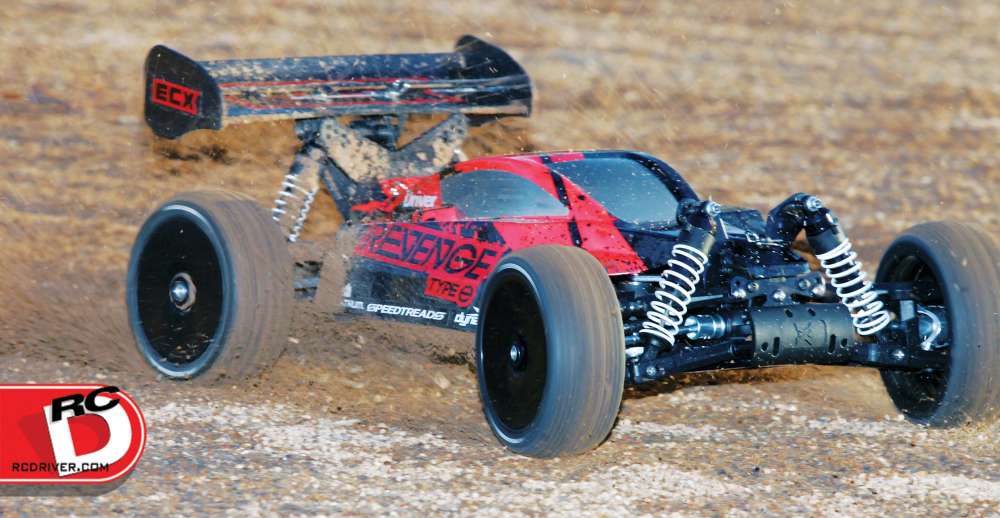
Don’t give your RC vehicle a “bath”
Water is sometimes referred to as the ‘universal solvent’ simply because to some degree it will clean anything. It obviously also works for our RC vehicles but only when properly used.
Don’t give your RC vehicle a “bath” with water. However, it can be great for cleaning bodies not painted with water soluble paint, as well as wheels and tires that have been removed from your vehicle.
The chassis? Not so much. If you should happen to get water splashed on/in/through your vehicle the best and probably only solution is to get the vehicle dry!
Overall, an old towel is a great tool for drying bodies, wheels/ tires and some of the chassis. The rest of the chassis is best dried with compressed air (canned or the ‘air hose’ variety).
Be sure that you hit all of the ‘nooks and crannies’ as accumulated water can rust and corrode many of the metal parts on our vehicles. If it gets around bearings you can do your best to wipe it away but the eventual outcome of this error can be a bearing that needs replacement.
Overall, being careful when cleaning is the best defense against getting water where it doesn’t belong.
Get Cleaning Supplies: HERE
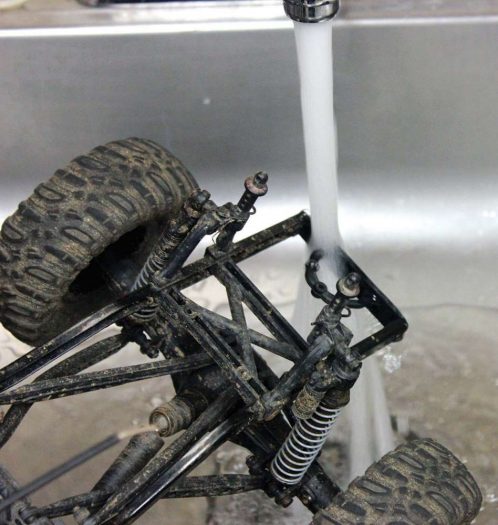
Don’t forget Driveshaft Maintenance
CVDs, Dogbones and universals are great for the majority of our vehicles. They apply power to the wheel much more smoothly and evenly than other types of drives and they tend to be much stronger if properly maintained.
Proper maintenance includes keeping them clean and replacing lubricants that may have been lost due to wear and/or cleaning.
In addition, the drive pins and center couplings are considered ‘wear parts’ and need to be replaced from time to time.
The best way to clean these drives is to remove them from the car; disassemble and flush with solvent to remove any contaminated grease.
Check for parts wear before reassembling using fresh thick grease and a bit of thread locker on the set screw.
Maintaining the CVD drives help you notice wear and replace the parts before they fail. In addition, clean, well-lubricated CVDs will perform like new!
Get Lubricants: HERE
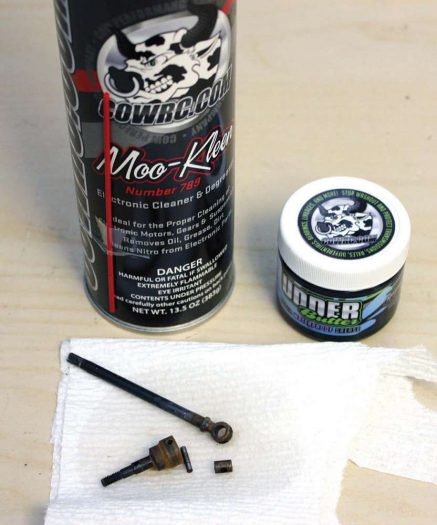
Don’t Neglect Your Differentials
The differentials are some of the most precisely designed parts in our RC vehicles. The type of differential is much less important than proper maintenance of the style that is in your vehicle.
Ball Differentials
Ball differentials are the most common type found in 1/10-scale off-road vehicles and they require a bit of regular maintenance to perform as designed.
Proper preventative maintenance requires complete disassembly of the differential housing after it has been removed from the vehicle. Gears should be examined to make sure there are no teeth missing. All bearings should be checked to make sure that they aren’t gritty or damaged.
The differential itself should be dismantled completely and all components cleaned with an appropriate de-greaser.
The best way to detect excessive wear in a ball diff is by running your fingernail across the groove that the individual balls ride in. If this groove is deep and uneven from use, it should be replaced along with the diff balls. Generally a differential rebuild kit will contain both of these parts.
When re-assembling, be sure that the differential balls are lubricated with just a ‘dab’ of differential grease. Over lubrication is potentially worse than under lubrication. The outside balls (thrust balls and/or cage) should be lubricated with a thicker type of grease after thorough cleaning or replacement.
With everything cleaned, the differential should be reassembled, installed and adjusted to the recommendations of the manufacturer. Obviously, the slipper clutch should also be re-adjusted after installation.
Get Greases: HERE
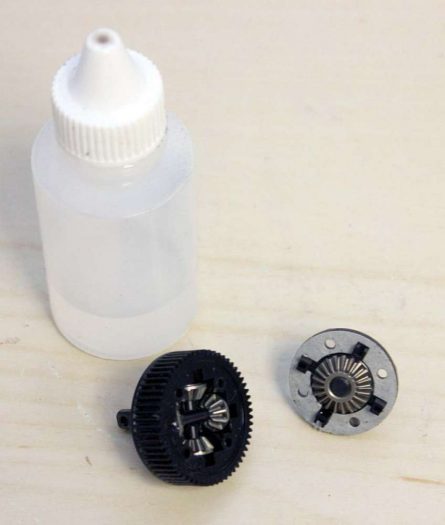
Gear Differentials
These contain fewer parts but need periodic cleaning and fresh lubricant. This is a simple process of removing the differential housing, opening it up and using solvent to remove the ‘grease’ after wiping.
Cross pins and gears should be examined closely for missing or worn gear teeth. If there is evidence of wear on either the gears or cross pins, they should be replaced as an assembly before the differential is re-assembled with fresh grease.
When these assemblies are replaced in the car, bearings should be checked for smooth, grit free movement and replaced as necessary.
Ger Oils: HERE
Don’t Skip the Shocks
Shocks are among the most over worked assemblies in our vehicles. They function in a dirty environment and therefore must be maintained periodically to function properly. If not maintained most shocks will lose fluid and their effectiveness.
Shock servicing is for the most part pretty straightforward. Simply remove the shocks from the vehicle, remove the springs and remove the cap on the shock. Drain any remaining fluid from the shock and check the color.
Dark grey fluid is indicative of a shock that has worn the coating (either anodizing, hard anodizing or magic stuff) from the inside of shock body and the body and piston (ideally) or at least the piston need to be replaced.
If the fluid drained is a brownish color and somewhat milky, a re-fill with the proper style and type of fluid (available from the manufacturer) to the correct level will get you back in motion.
Check the manufacturer’s recommendation for filling shocks as there are a number of variations and the shocks only function well if re-filled properly. Check your work and make sure that the shock is functioning properly before re-installing.
Get Shock Oil: HERE
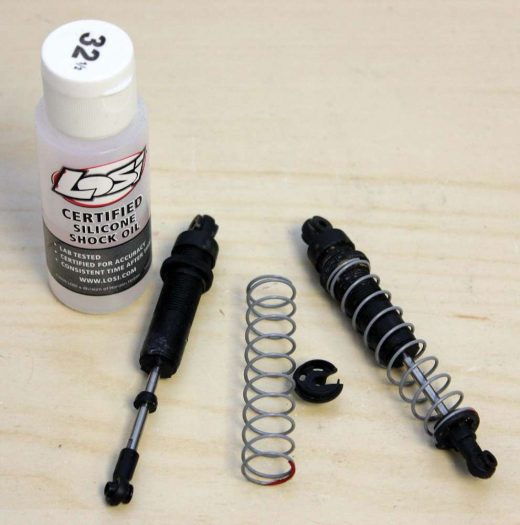
Don’t Run with Bent or Cracked Parts
Any time one of the suspension pins is bent it will bind up the action of that suspension component and control and handling will suffer. Staying on top of this aspect of RC car maintenance is important.
The best method for checking the pins is to remove them from the vehicle and roll them on a flat, hard surface. Any bends will be pretty obvious by the odd gyrations that the pin will go through when rolling.
Uneven wear is another good indicator. The only sure cure for a bent pin is replacing it with parts from the manufacturer or titanium from one of the aftermarket suppliers.
Cracked parts are a bit more difficult to find; you have to look at all sides of the suspension arm along with the bulkhead which attaches the arm to the main chassis and the area that the hub carrier or steering block attaches. These cracks can be difficult to see and good light is required. Cracked suspension components will eventually fail and usually at the most inconvenient time.
Get RC Tools: HERE
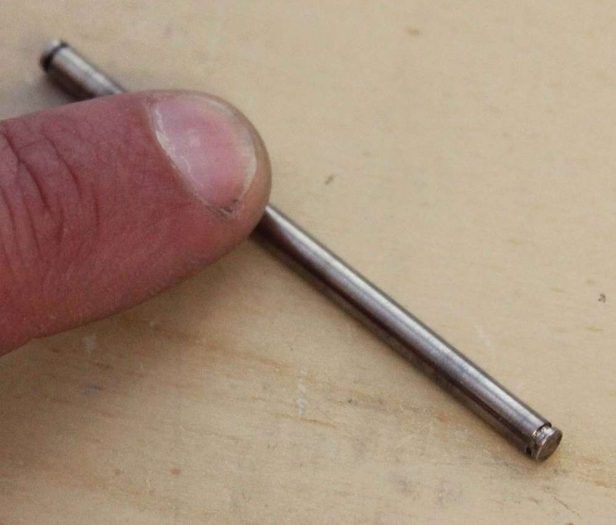
Wrap-up
Regular checks of all of these systems and components can not only reduce or prevent wear on these items but will also increase the time spent running them. Professional racers (both full scale and RC) practice preventative RC car maintenance between events which increases the reliability of their vehicles. Every one of the operations described above will help prolong the life of your vehicle and enhance your experience.
By Chris Kovachevich
*Notice: Some of our articles, videos and descriptions may contain affiliate links or coupon codes, which means that if you click on or use one of the product links/ codes, we may receive a small commission. This helps support the website and social media channels and allows us to continue to produce content. Thank you for the support!
 RC Driver The Best In RC Car & Truck News, Reviews & Video
RC Driver The Best In RC Car & Truck News, Reviews & Video 








Can I use air tool oil instead of dedicated diff oil?